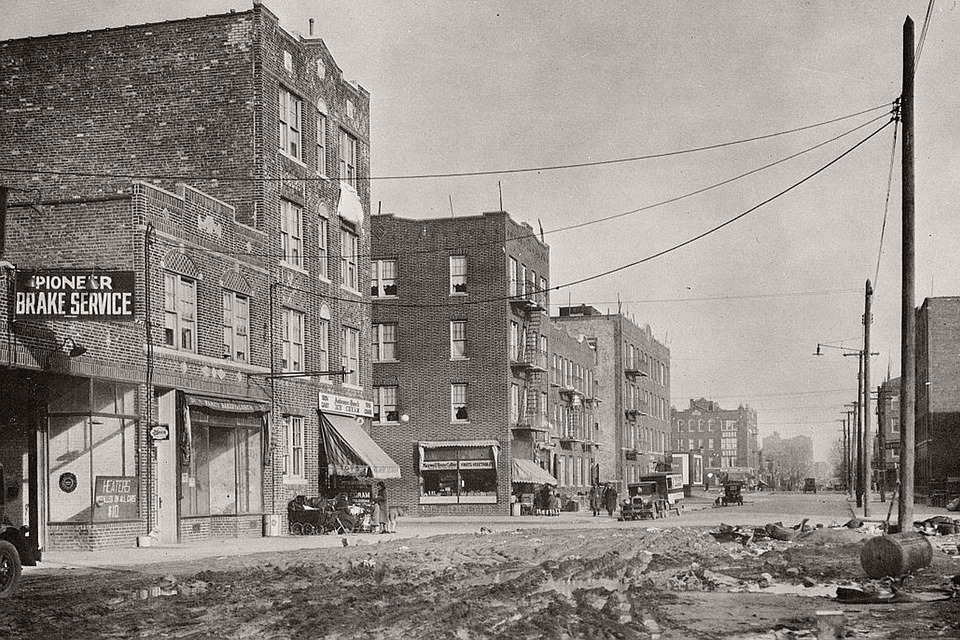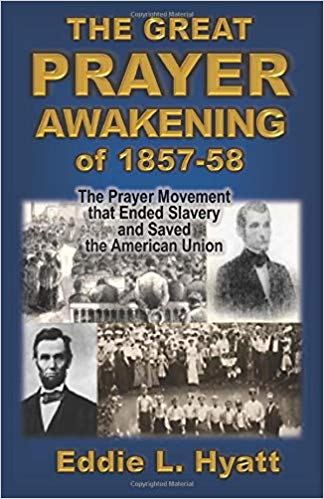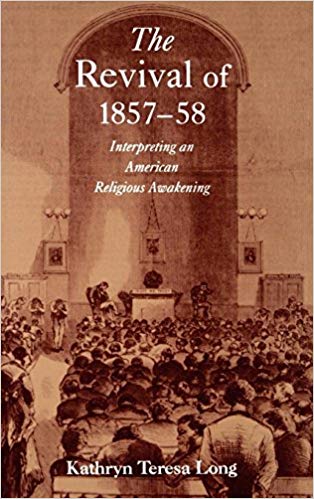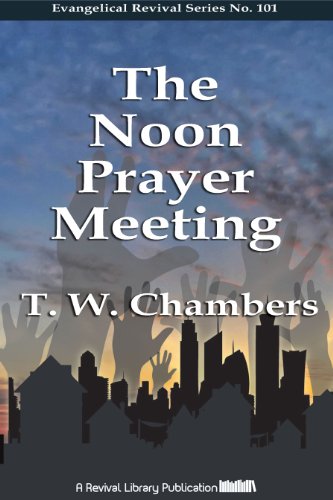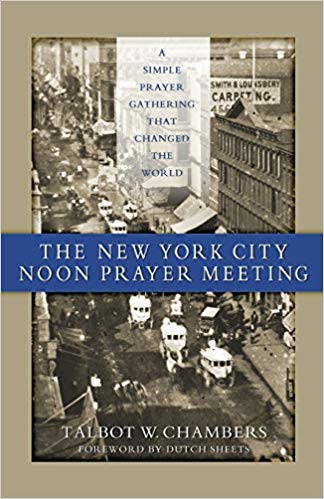Jeremiah Lanphier was born in 1809, in Connecticut. He grew up in New York, where they moved when he was 3. He started learning to be a tailor when he was 16, apprenticing in Albany.
He became a businessman as an adult, and when he was in his late forties, he was appointed by the Dutch reformed North Church to be a missionary in the city of New York. North Church’s membership had been declining because its people were moving from downtown to better areas and Lanphier’s commission was to visit the surrounding neighborhood to enlist new members. Lanphier was a layman, but the Dutch Consistory were convinced he was the right man for the job. He proved them correct, as he was burdened for the people in the area.
He spent three months working to bring in new members, but with limited results. He found himself weary and discouraged. As he was praying about his situation at one point, it occurred to him that a mid-day prayer time might be something businessmen may be interested in, so he developed a flyer to hand out, headed “How often shall I pray?” The content of the flyer was as follows:
As often as the language of prayer is in my heart; as often as I see my need of help; as often as I feel the power of temptation; as often as I am made sensible of any spiritual declension or feel the aggression of a worldly spirit.
In prayer we leave the business of time for that of eternity, and intercourse with men for intercourse with God.
A day Prayer Meeting is held every Wednesday, from 12 to 1 o’clock, in the Consistory building in the rear of the North Dutch Church, corner of Fulton and William Streets (entrance from Fulton and Ann Streets).
This meeting is intended to give merchants, mechanics, clerks, strangers, and business men generally an opportunity to stop and call upon God amid the perplexities incident to their respective avocations. It will continue for one hour; but it is also designed for those who may find it inconvenient to remain more than five or ten minutes, as well as for those who can spare the whole hour.
Lanphier passed out many of these handbills, handing them personally to people around the area. He set a placard outside the old church building that read “Prayer Meeting from 12 to 1 o’clock – Stop 5, 10, or 20 minutes, or the whole hour, as your time admits.” He went into a room upstairs to wait for others to come and pray with him.
He waited. He waited thirty minutes before he heard footsteps. One man stepped into the room. He was followed by another, and then three more, and the six men prayed together. They agreed to meet again for prayer the following Wednesday.
The next week, 20 men met together to pray. The following week there were around 40. In the fourth week, they began a daily prayer meeting which was attended by people from all walks of life, and many denominations. Two days later, there was a stock market crash, which caused many people to lose their jobs, and many businesses to fail. The combination of fervent prayer and great need sparked a revival.
Six months later, prayer meetings were still being held regularly at the Dutch North Church. There were also prayer meetings being held in Richmond, Virginia, several towns in Indiana, Boston, Massachusetts, Hoboken, Illinois, and many other cities throughout the country. The revival was in evidence from coast to coast and there were tens of thousands of converts.
Over the next two years, the converts numbered over a million. These were added to churches across the United States. This was not due to some amazing preacher, or some articulate orator, but rather due to effectual fervent prayer of righteous men and women. The prayer meetings were led by laymen – businessmen primarily – in most places.
Even one notoriously evil town, the town of Hell Corner, New Hampshire, was affected. Known as a stronghold of sin, this town was full of people with no interest in God and His ways. At one point, a man spouted a stream of profanity that even shocked the people in Hell Corner, and someone joked that a prayer meeting was needed there. Surprisingly, that resulted in one being organized. The problem was finding a leader for it, because the people of the town were not able. A deacon from a nearby town came to lead it, and four men were converted, and a godly group began to form.
In other areas, as well, the Spirit of God was evident. The New York harbor, for instance, had sailors that became convicted before even reaching land, with the captain and 30 men coming to Christ. Businessmen who were going to prayer at lunch had clients join them that were then converted. The revival spread throughout the country and even overseas.
Jeremiah Lanphier went to his final reward at 90 years old in December 1898.
A sculpture was created to honor Jeremiah Lanphier’s contribution to the spiritual awakening, which shows him seated, with a hand open in welcome, entitled “Invitation to Pray.” It is located in lower Manhattan on King’s campus.
Read more about the movement of prayer that Jeremiah Lanphier was instrumental in beginning in these books.
The Great Prayer Awakening of 1857-58
Known as the Third Great Awakening, the time of prayer and revival is described in this historical book.
The Revival of 1857-58: Interpreting an American Religious Awakening
An in-depth study of the widespread religious awakening that occurred in the United States due to urban prayer meetings.
The Noon Prayer Meeting: Its origin, character, and progress, with some of its results
Probably the greatest revival experienced in the United States, the Layman’s Prayer Revival began with the noon prayer meeting.
The New York City Noon Prayer Meeting
This volume was originally published in 1858, while the movement was still happening. It is full of stories of how God drew people and His power in evidence.

